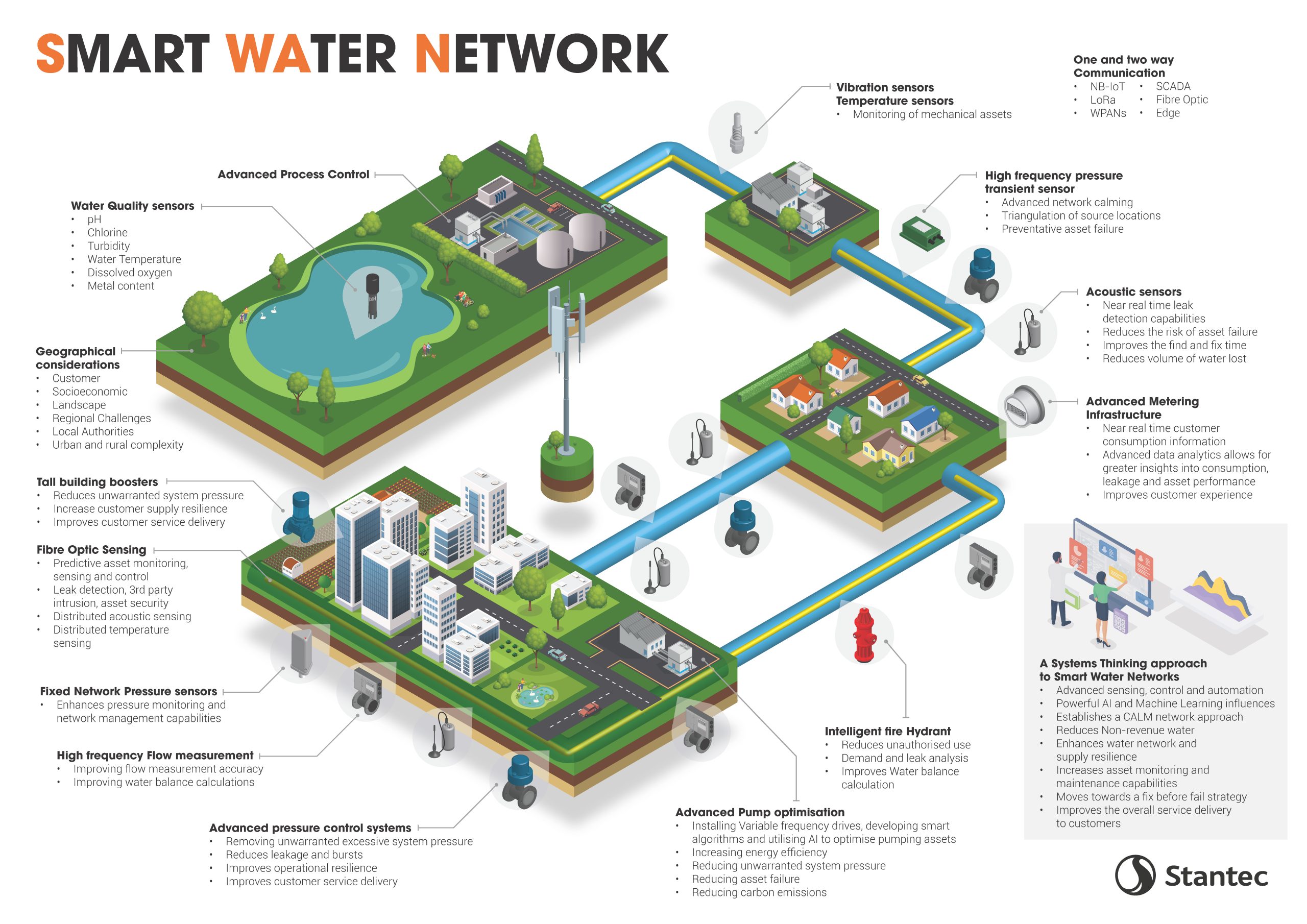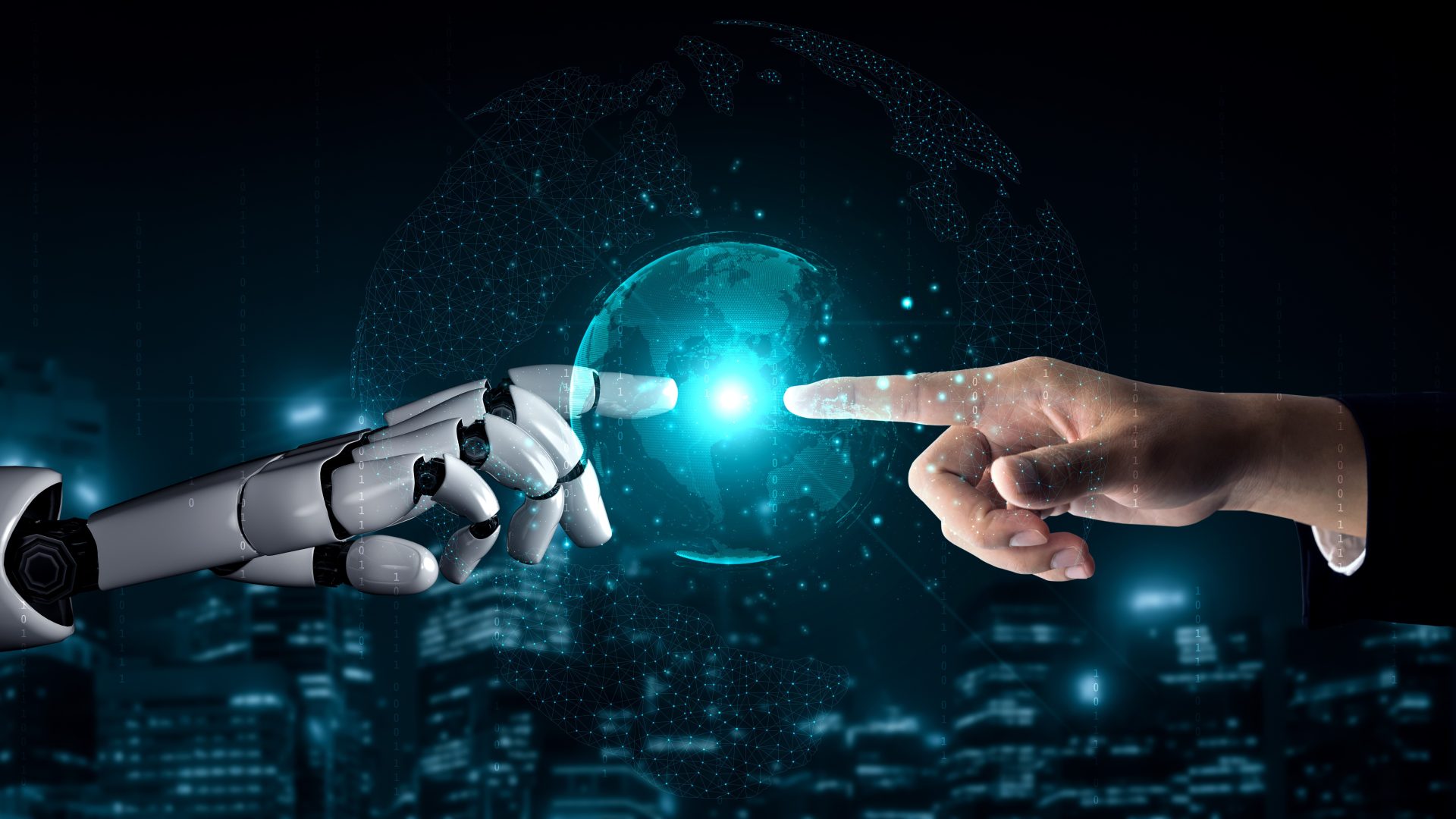
It wasn’t long ago that artificial intelligence (AI) was seen as a leap of faith into the future of an unknown.
Many viewed it as something that belonged in the realms of science fiction. Yet here we are—on the brink of a new technological dawn. As with the introduction of the internet, the steam engine, and electrical power, we are once again seeing a rapid explosion of innovation take place across the world.
Many hail this growth in automation and AI as a revolution. And this massive digitalisation of things will touch every sector. The utility industries are no exception.
Supporting the digitalisation of water
With more advanced technology, deep learning analytics, and cloud-based solutions, we can transform management of the water sector. Water companies can better understand how their assets are truly performing. How? By using more innovative solutions like advanced automation and control, edge computing, robotics, virtual reality (VR) and augmented reality (AR) and combining them with Industrial Internet of Things (IIOT) technology. In turn, this deeper understanding brings better customer experiences and more resilient networks.
When embraced properly, IIOT sensors can provide a range of efficiency, sustainability, and safety benefits. Users can monitor water quality, pressure, leakage, customer usage, demand, and flow information. Also available is vibrational, acoustical, process, and transient data. The insight from these sensors can prove invaluable, especially when monitored in near real time.
This data can be used to create a ‘digital twin’ of an entire system’s condition. This allows an end user to have greater visibility over the performance of the water-supply network on any day. They can better monitor the impact of usage on a hot day, for example, as well as leakage outbreaks during a cold spell.
By making use of smart water network solutions, water companies can integrate the rich data from a wide variety of sources present it on a single advanced, visualisation platform. By introducing AI and machine learning, companies can automate control of their assets and future proof operational decision making.
Adding value to communities
But how can we take this further? One interesting advance to watch is fibre optics in water. By laying fibre optics inside water pipes under controlled conditions, we can use methods such as distributed acoustic and temperature sensing to essentially turn fibre strands into an array of microphones or one long thermometer.
Finding a water leak depends on many factors. They include the environment, pipe material, hydraulics, and accessibility. We can find and stop leaks much faster using the power of fibre optics, along with existing methods.
This even has the potential to add real social value to communities. Telecoms and Water Combined Operations, or project TAWCO, is a groundbreaking project funded by the Department for Science, Innovation and Technology. The project will look at how to use the UK’s water network as a conduit for delivering high-speed broadband through fibre optic cables. This will allow internet providers to access homes and businesses in hard-to-reach areas.
A more resilient network
Ultimately, water companies need a ‘fix before fail’ approach at every location on a water supply network. Using a combination of fixed network IIOT sensors, lift and shift type technology, as well as fibre-optic sensing, is a great way to make this happen.
Meanwhile, advanced metering infrastructure at the customers’ boundaries will provide deeper insights into usage. Once all this data has been captured, combined, and fed into a single platform, we can then start to see the bigger picture.
We can also improve network resilience with advanced automation and control measures while managing pressure at the source. Imagine a water network with excessive pressure, which is then pumped from a lower location to a much higher location. This type of pressure is commonly associated with higher leakage. With smarter, informed decision-making using IIOT sensor data, engineers can design advanced pressure management schemes. Machine learning can help. It can make automated changes according to the water demand and hydraulics.
Technologies such as NBIoT (Narrowband Internet of Things) and LoRAWAN (Long-Range-Wide Area Networks) are also helpful. They provide the communication protocols that allow infrastructure to integrate with digital twin platforms.
The journey ahead
All this is certainly exciting, but these benefits aren’t just a nice to have. They’re a must when it comes to our resilience. Climate concerns, an increasing population, and the increasing strain on our infrastructure means change needs to happen now.
We need to consider the challenges that may hinder our journey towards a fully digitalised water sector. Investment is the one of the most fundamental. The changes require a huge overhaul of existing physical infrastructure. It also means building new utilities, such as locations to store and manage data and training. With so much information being captured, protecting against third-party security risks, and complying with GDPR (General Data Protection Regulation) legislation needs to be a key concern.
The fact is that the long-term benefits outweigh the short-term costs. These improvements reduce the need for maintenance and the replacement of assets. They also greatly cut leakage and fix issues before they even become problems. Water companies have a clear business case to invest and implement the changes.
There are environmental advantages too. By embracing this new digital revolution, the water sector will be able to reduce its impact on our natural resources and be better able to manage drought risks.
Drawing in support
As we move towards a more digital sector, the typical jobs we see in the industry will change along with the technology. It’s important that we support the transformation with a workforce that is properly trained with the right expertise. This could mean attracting talent from other sectors as well as upskilling the existing workforce.
Stantec can support companies through this transition. We’re excited to help water companies in this revolution with cutting-edge knowledge, best practice, and tools that work across various sectors to aid the systems thinking and business transformation process.
The journey towards complete digitalisation is complex. We can learn lessons from other industries, but it is not a one-size-fits-all approach. If we are to rise to the challenge and reap the benefits, then we will need to move quickly.
The industry needs to work with a range of stakeholders from inside and outside of our sector, as well as regulators and the supply chain to ensure success. We must embrace and understand this new technology while making the most of intelligent investment.




